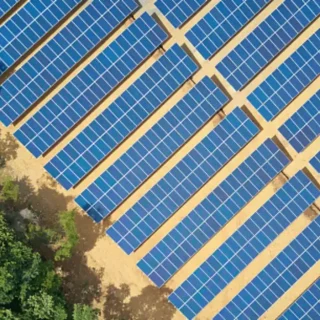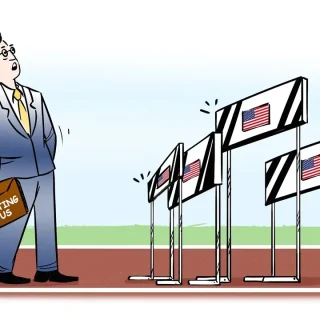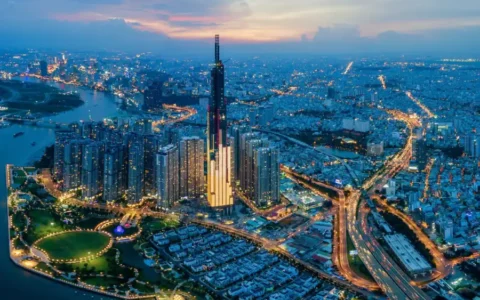
By Mona Shah- Managing Partner at Mona Shah & Partners
The prospect of U.S. residency through the EB-5 Immigrant Investment Program continues to lure international investors with the promise of new opportunities, economic stability, and a coveted green card. Yet, amidst this enticing opportunity lies a looming question—how long will the wait be? EB-5 has been a victim of its own success as lengthy visa and adjudication wait times have driven potential clients away, particularly investors from high-demand countries like India and China. However, the passage of the EB-5 Reform and Integrity Act of 2022 (RIA) revitalized the program by introducing Visa Set Asides, offering a glimmer of hope for prospective investors. But now the question remains: are we once again facing the specter of backlogs for these two countries?
The 10,000 EB-5 Visa Puzzle and Country Limits:
The EB-5 Immigrant Investor Program offers investors a path to U.S. permanent residency in exchange for a qualifying investment that creates or retains at least 10 full-time jobs for U.S. workers. However, the EB-5 program is capped at 10,000 visas per year, which has created a bottleneck for countries with high demand, such as India and China. Notably, most of the world is not facing visa backlogs.
Country Limits: The program specifically allocates up to 7% of the visas (700) to each country of the 10,000 issued each year under the EB-5 category. However, countries—like China and India—often see their annual share consumed rapidly, leading to extended wait times and backlogs that can span several years.
The EB-5 Reform and Integrity Act (RIA) created new categories of visas. Of the 10,000 visas, the majority fall into the “Unreserved” category, which includes applicants who invested before RIA 2022 and those who have made post-RIA investments that do not meet the criteria for set-aside categories. In addition, there are reserved visas—often referred to as “set-aside” visas—for investments in designated areas: 20% for Rural projects, 10% for High Unemployment areas, and 2% for Infrastructure initiatives.
These set-aside visas had significantly impacted Chinese and Indian nationals, who were facing substantial backlogs in the unreserved category prior to the RIA. Post-RIA investors were able to opt for one of the three set-aside categories. This new provision allows these investors to benefit in several ways: 1) they can file their green card applications concurrently with their EB-5 petitions if they are already in the U.S. on a nonimmigrant visa, 2) they may apply for employment and travel authorization while filing for their green cards concurrently, and 3) they can obtain conditional green cards more quickly based on the available visas in these set-aside categories.

Worrying New Predictions:
Every month, the Visa Bulletin outlines the availability of immigrant visas across various categories. For EB-5 applicants from backlogged countries, understanding this bulletin is crucial for strategic planning. For example, a listing of ‘C’ means the visa is current—great news for applicants, as they can proceed with their green card applications without delay. Conversely, a dated listing marks a backlog, emphasizing the criticality of a priority date.
Due to the high volume of investors, the impending retrogression of EB-5 set-aside visas for India and China has been anticipated, but the timing remains uncertain. Recent data reflecting the excess demand for EB-5 petition filings for High Unemployment and, soon, Rural categories confirms that the pressure is mounting. The pressing question is: when will high unemployment and rural investors, along with their families, reach the visa stage in sufficient numbers to exhaust the available visas? A dramatic acceleration in recent petition processing volumes by USCIS has changed the landscape. The January 2025 Visa Bulletin (produced by the U.S. Department of State) now includes a cautionary note signaling potential retrogression later this year, raising concerns for future applicants in these categories.
Visa Bulletin retrogression will significantly impact the EB-5 market for India and China, as many individuals often do not perceive backlogs until they are visibly reflected in the visa bulletin. Unfortunately, numerous marketing emails and published articles perpetuate misleading statements. However, there is merit to the advice encouraging investors to hurry and file EB-5 petitions for those based in the United States. RIA allows EB-5 investors within the U.S. to file the green card application concurrently as long as the category remains current. Thus, investors would benefit from immediate employment and travel benefits. These interim benefits hold considerable value. However, it is essential to note that concurrent filing is not available for countries experiencing backlogs.

Global Perspectives and Viable Alternatives:
While the U.S. EB-5 program is undoubtedly attractive, the onset of retrogression will likely lead anxious investors to explore alternative options. Notably, programs such as Canada’s Start-Up Visa and Portugal’s Golden Visa, which have traditionally offered shorter processing times than the EB-5, are now experiencing significant delays. Currently, Portugal’s Golden Visa processing can take up to two years, while Canada’s Start-Up Visa may require between 24 to 48 months for residency.
At the time of writing this article, in all Reserved EB-5 categories, there are no cutoff dates for applicants across the board in the upcoming month (March 2025). In the Unreserved EB-5 category, the dates for filing will remain “current” for all applicants in March 2025, except for those born in China or India. For Chinese applicants, the date for filing will retrogress to October 1, 2016, while for Indian applicants, the date for filing will remain April 1, 2022. For potential clients from India and China on the fence regarding the EB-5 program, understanding wait times is crucial to ensuring an informed decision.
Time may be the deciding factor after all!










